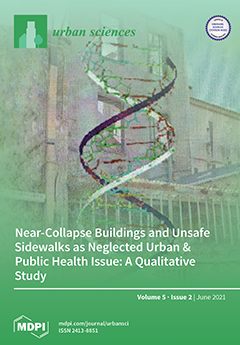Open AccessArticle
Parents’ Perceived Neighborhood Safety and Children’s Cognitive Performance: Complexities by Race, Ethnicity, and Cognitive Domain
by
Shervin Assari, Shanika Boyce, Ritesh Mistry, Alvin Thomas, Harvey L. Nicholson, Jr., Ryon J. Cobb, Adolfo G. Cuevas, Daniel B. Lee, Mohsen Bazargan, Cleopatra H. Caldwell, Tommy J. Curry and Marc A. Zimmerman
Cited by 4 | Viewed by 4365
Abstract
Background:Aim: To examine racial/ethnic variations in the effect of parents’ subjective neighborhood safety on children’s cognitive performance.
Methods: This cross-sectional study included 10,027 children from the Adolescent Brain Cognitive Development (ABCD) study. The exposure variable was parents’ subjective neighborhood safety. The outcomes
[...] Read more.
Background:Aim: To examine racial/ethnic variations in the effect of parents’ subjective neighborhood safety on children’s cognitive performance.
Methods: This cross-sectional study included 10,027 children from the Adolescent Brain Cognitive Development (ABCD) study. The exposure variable was parents’ subjective neighborhood safety. The outcomes were three domains of children’s cognitive performance: general cognitive performance, executive functioning, and learning/memory. We used mixed-effects regression models for data analysis.
Results: Overall, parents’ subjective neighborhood safety was positively associated with children’s executive functioning, but not general cognitive performance or learning/memory. Higher parents’ subjective neighborhood safety had a more positive influence on the executive functioning of non-Hispanic White than Asian American children. Higher parents’ subjective neighborhood safety was associated with higher general cognitive performance and learning/memory for non-White children relative to non-Hispanic White children.
Conclusion: The race/ethnicity of children moderates the association between neighborhood safety and cognitive performance. This becomes more complicated, as the patterns seem to differ across ethnicity and cognitive domains. It is unknown whether the observed racial/ethnic variations in the effect of neighborhood safety on cognitive performance are neighborhood characteristics such as residential segregation. Addressing neighborhood inequalities is needed if we wish to reduce racial/ethnic inequities in the cognitive development of children.
Full article
►▼
Show Figures





